Yamaha's Tracer 900 has received a host of updates to further polish an already formidable, versatile and great value option in the sports-touring segment. Review by Kris Hodgson, Images by David H.
Yamaha’s MT-09 based offerings have been a point of personal interest since I tested the MT-09 in 2013. I’m one of those people who owns a triple-cylinder motorcycle and they are rare enough (relatively speaking) that I can take an interest in all triple-cylinders on the market with ease.
Starting from humble beginnings the MT-09 was introduced at a price point that was, simply put, insane. There was a few areas for improvement but that price instantly ensured the bike’s success and Yamaha have continued to polish that powerplant and the accompanying machines with each generation.
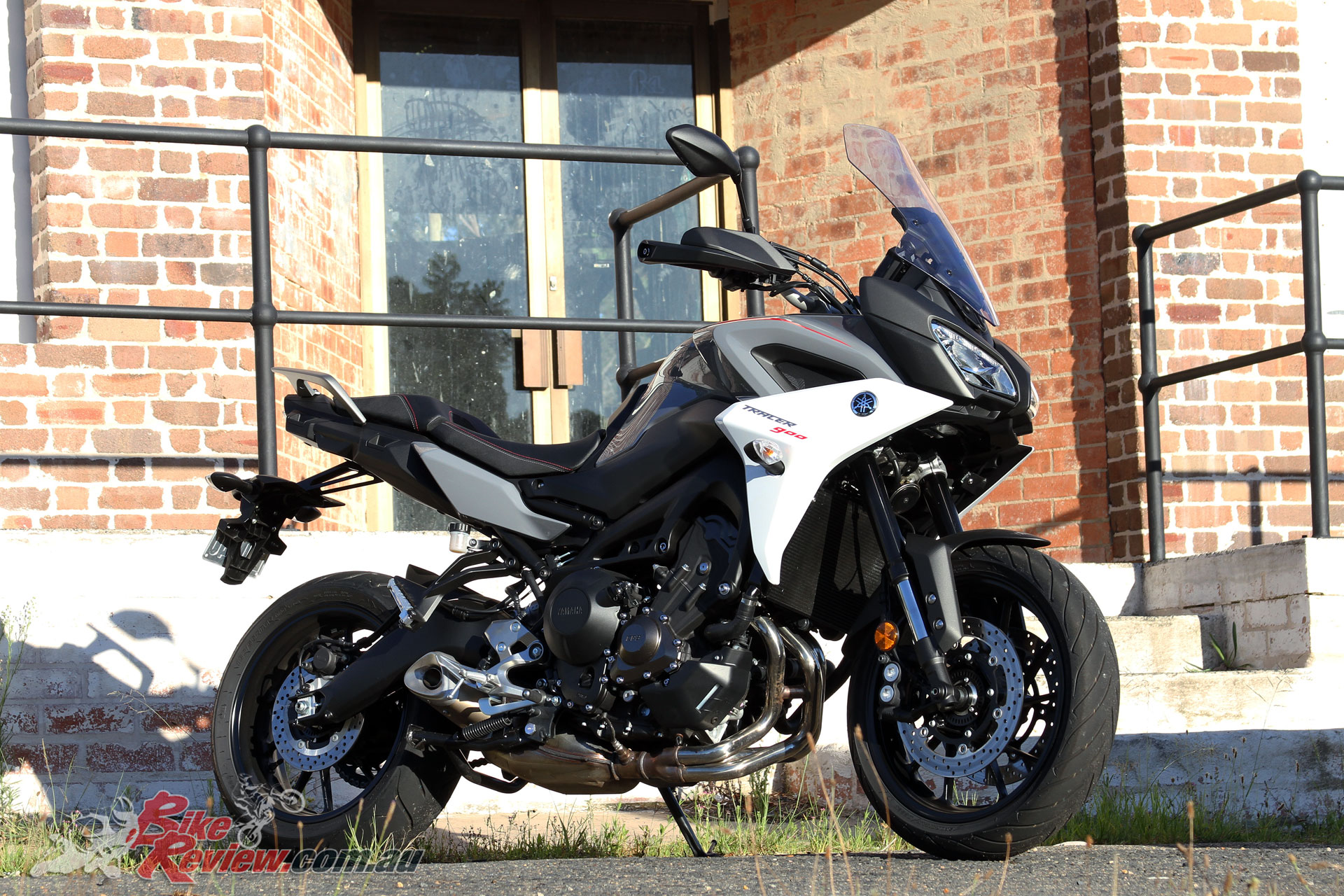
The Yamaha Tracer 900 is the latest generation of the brand’s sports touring triple
We haven’t yet seen a sportsbike version, although the Niken is certainly an out of the box addition, while the MT-09 Tracer or Tracer 900 takes the Yamaha triple into the sports-touring category.
It’s a significant offering because it retains that MT-09 engine character which thanks to Ride Modes can be tamed down for the most annoying of peak hour traffic, while still thrilling through the twisties on the weekend. Longer distances in the saddle are also easy, while plenty of wind protection belies a nimble and light feeling package.
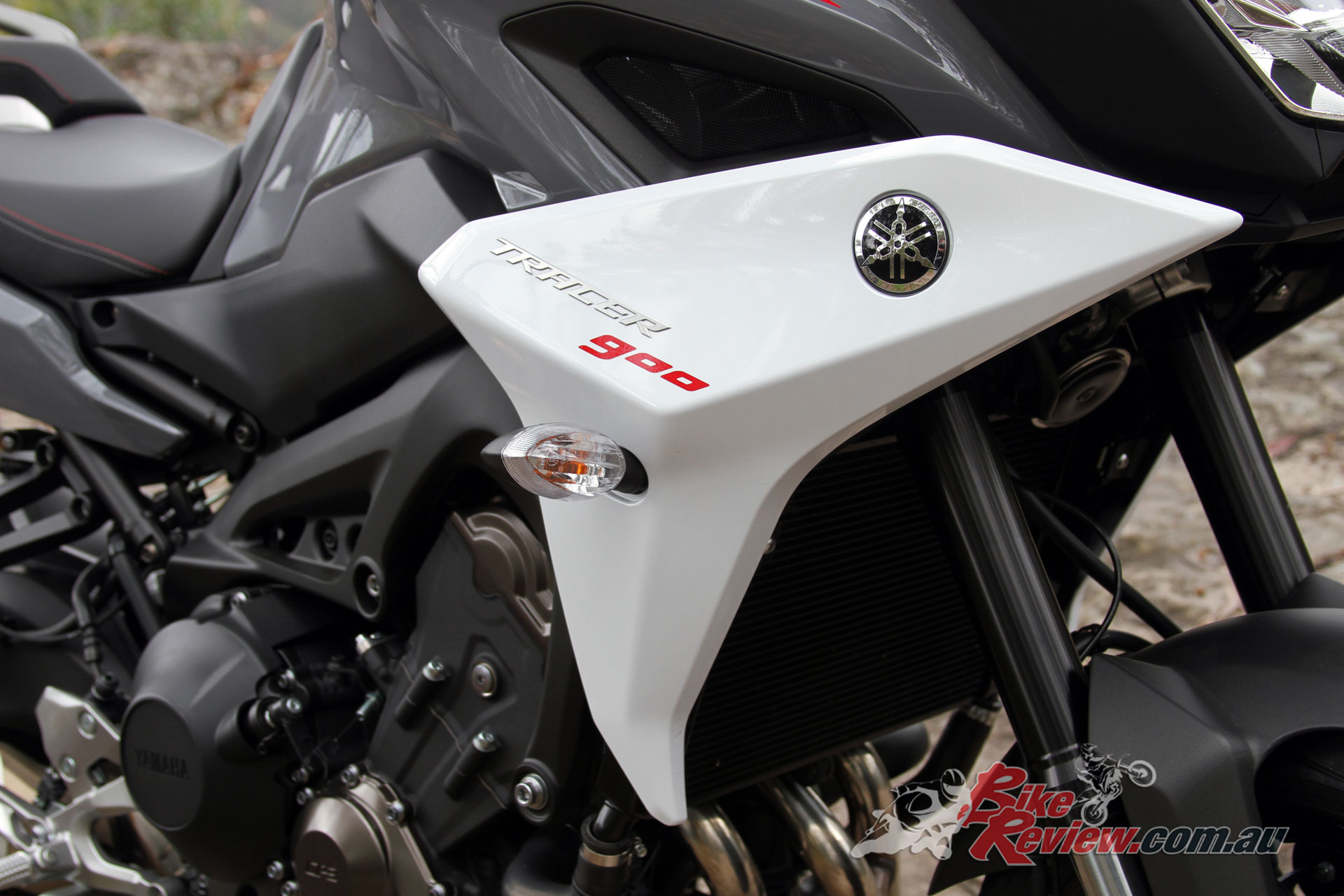
2019 Yamaha Tracer 900
The Tracer 900 is a bit of a chimera to be honest. For normal riding I’d forget I was on a taller touring/adventure style machine and you’d be mistaken for just thinking it’s a nakedbike – except for the expanse of tank and fairings in front of you. It doesn’t feel wide between the knees however, and a long seat offers the ability to change your position, especially with your legs.
What does feel wide are those ‘bars, which feature some pretty busy switchgear, however it’s all simple to operate, with a Mode button allowing easy switches, even on the move. You do need the throttle closed to switch between modes, rather than other systems where you can change the selection then lock it in by closing the throttle. The adjustable screen is also a one hand job on the move and a nice feature on the open road.
As mentioned above, the ride modes themselves offer significantly altered throttle response, with Standard mode a fair bit doughier. Don’t scoff though, in traffic it’s perfect, while out on the really rough Australian back roads it’ll also prevent the big bumps being transferred through to the throttle. A-mode in comparison is more instantaneous and aggressive, but obviously much more light-switch like.
Traction control comes standard with three levels of adjustment and I left it on 1 for the various conditions I encountered over the test period, without any early or inconvenient activation, even when taking photos and occasionally venturing over slippery or gravelly sections.
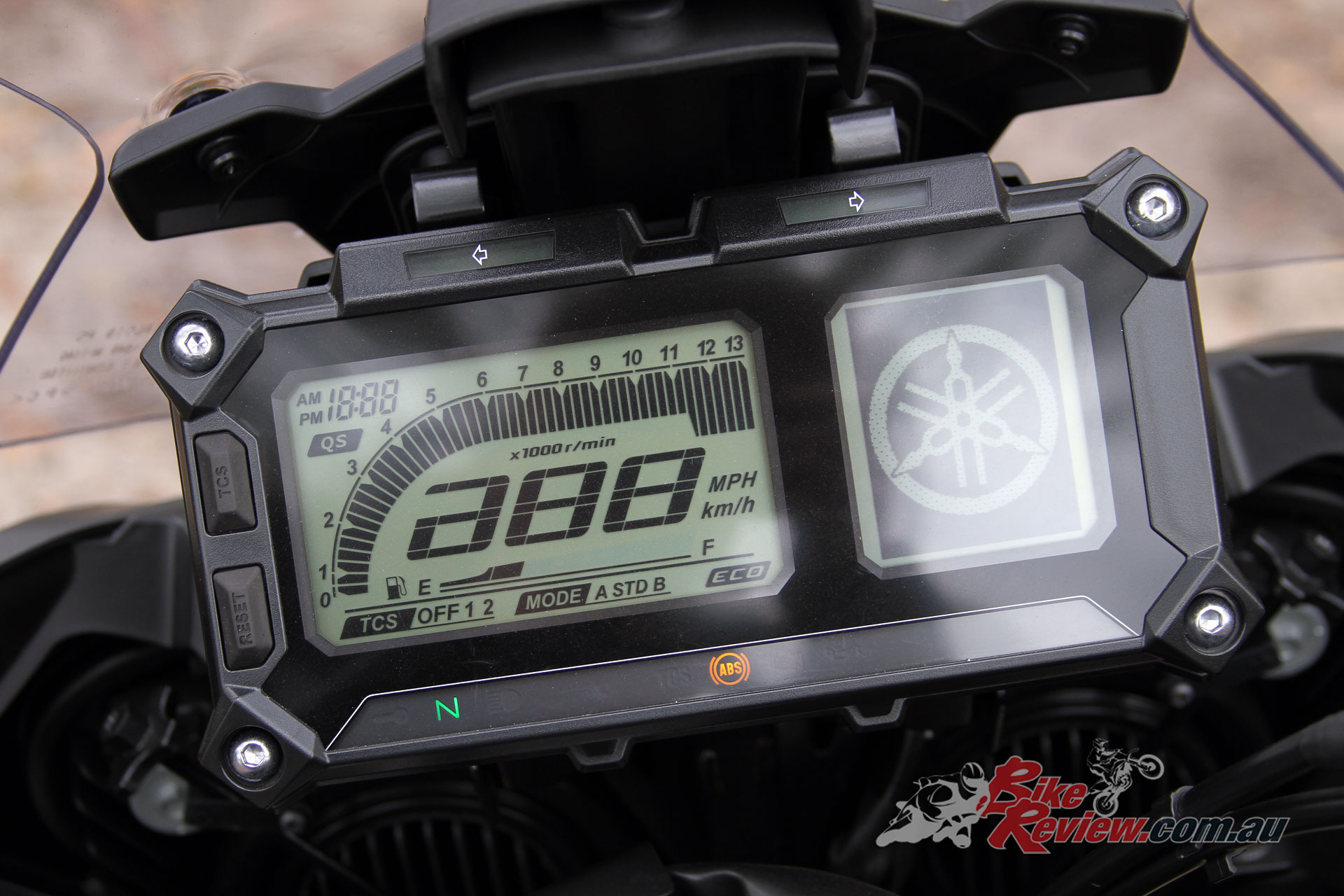
2019 Yamaha Tracer 900
ABS is standard, while a few more advanced features, like cruise control and a quickshifter (up only) are found on the up-spec GT edition, which also boasts a TFT display, hard panniers, fully adjustable suspension and heated grips. All that for an additional $2700 (GT is $18,199) seems like a good idea, but then it’s all easy stuff to live without if you’re on a budget.
Overall build quality is also typical of Yamaha and very good, while the finishes include plastic around the headlights and on the tail, including the integrated pannier mounting system, with a high gloss (Nimbus) grey ‘plastic’ paint kind of effect on the tank and the tail panels. It’s a little bit like what I saw on an Audi during the testing period, while the side panels over the radiator ends in white stand out and are contoured to give a sporty aspect.
The frame, wheels and engine in black ensure a clean overall look, with just the exhaust system and foot controls standing out. LED headlights also include daytime running lights to add a bit more character to that front end.
If you’re just interested in the changes from the last generation Tracer 900, you’ll find a host of refinements to the bodywork, a revised (larger) screen, and lower pillion footrest position, as well as new grab rails.
More substantial changes include a new aluminium swingarm and revised rear shock settings for further optimised touring performance, while also allowing for the fitment of genuine panniers without any clearance issues. The seats have also been updated, with the rider seat offering a high and low position to better suit a variety of riders and the ‘bars are also narrower, despite feeling very wide, with smaller handguards.
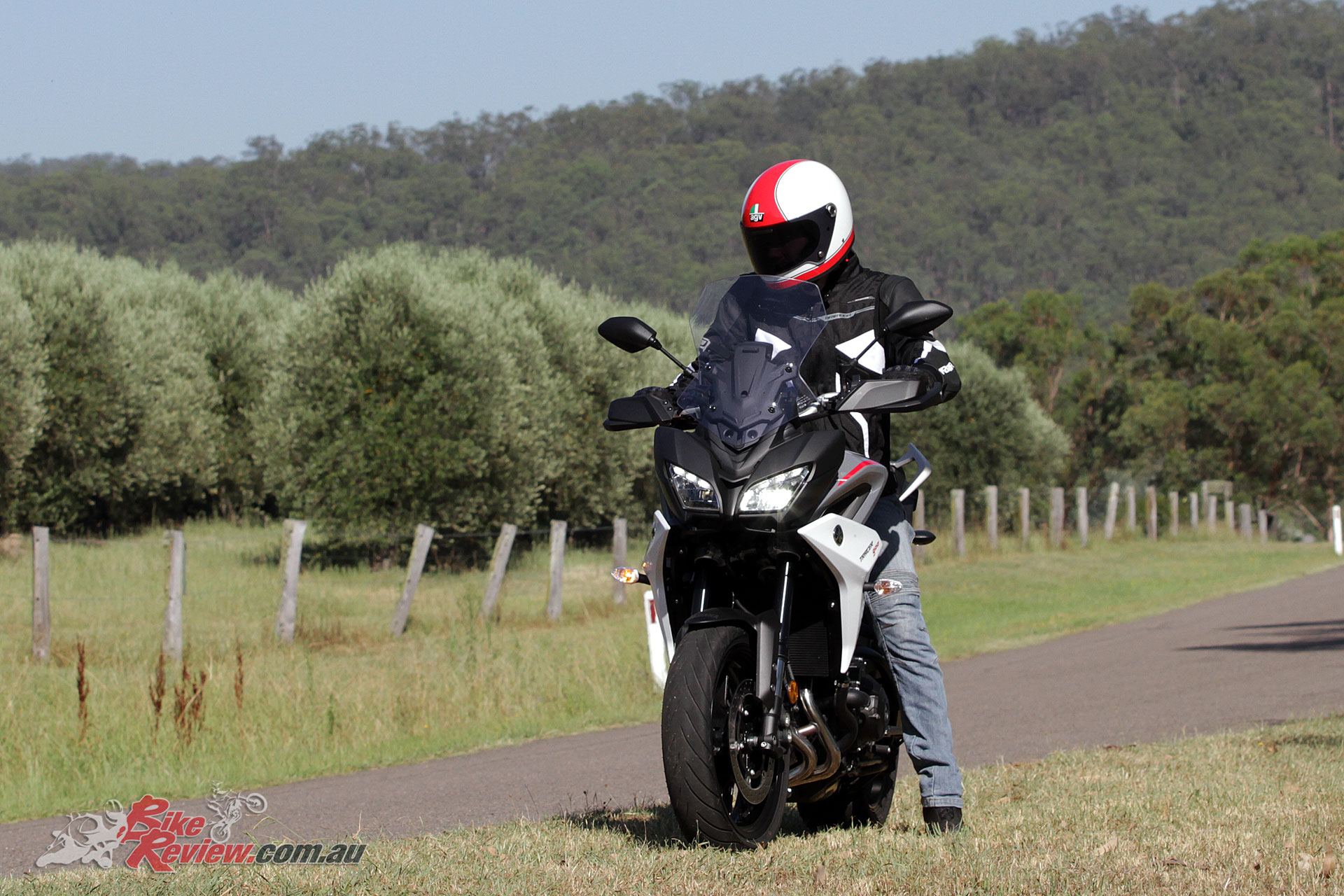
The Tracer 900 despite being relatively tall feels light and nimble on the move, with great overall balance
2019 YAMAHA TRACER 900 – THE RIDE
Moving the Tracer 900 around my garage it feels light and balanced for a tall bike, while jumping on board at 180cm I can get a foot down flat with ease, keeping in mind I’m on the leggy side. ‘Bars are wide, seating upright and controls all fall to hand, although I have to reduce the span on the brake lever, which is adjustable.
Firing up the bike and taking a quick look at the dash reveals a central display with the usual suspects and a secondary dash that looks like something that belongs on a Dakar bike and includes a gear indicator and trip counters. It’s pretty cool really.
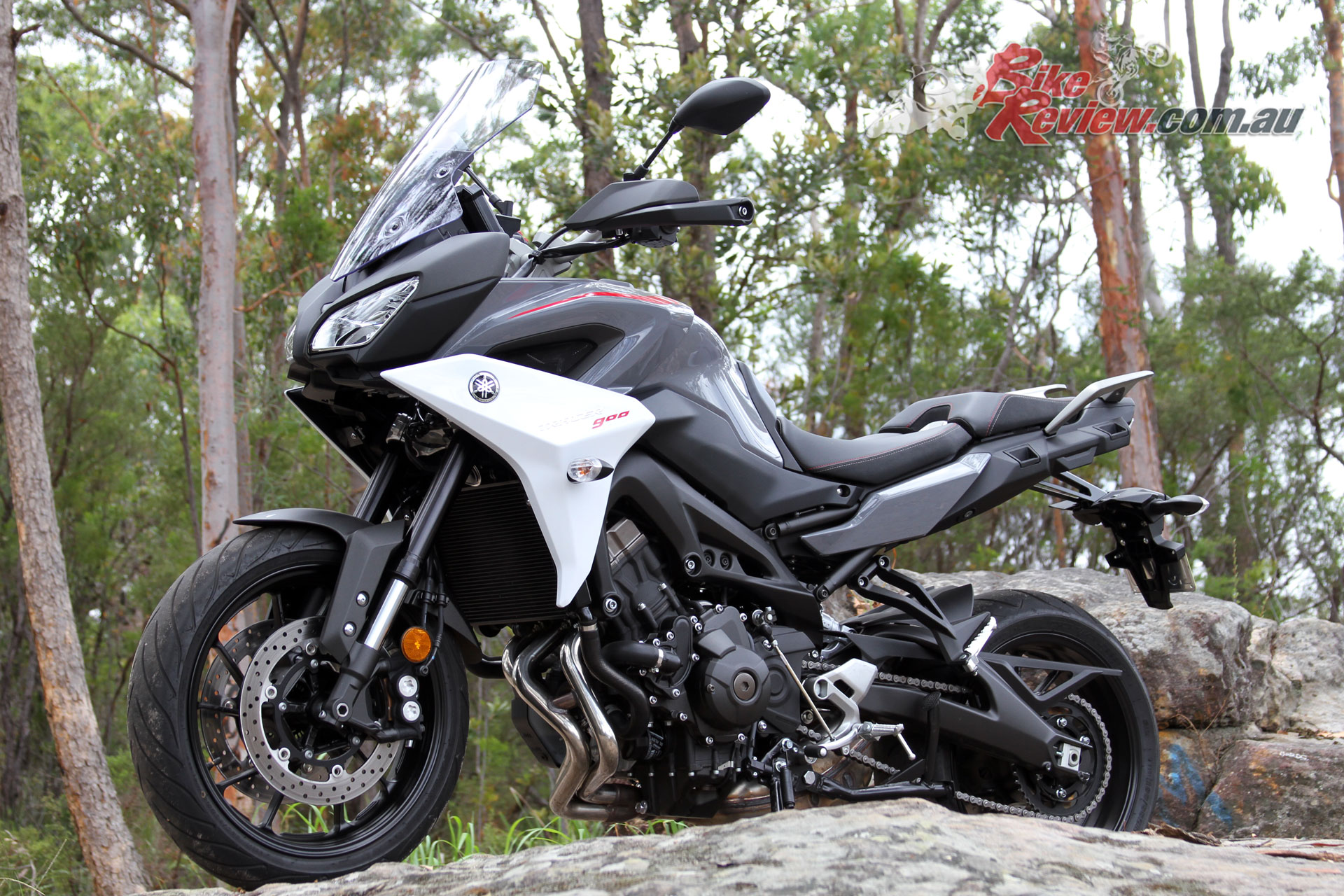
2019 Yamaha Tracer 900
I start in Standard mode and I’m immediately impressed with how smooth the throttle action is in delivering power, especially with plenty of suburban commuting conditions part of my first few rides. The clutch lever is easy enough to operate to neither be judged light nor heavy, while the gearbox is pretty slick and only a little clunky down low, with solid engagement and obviously no quick shifter.
Snap open that throttle and there’s good acceleration, but nothing super noteworthy. I mean it’s good but this is the CP3 triple-cylinder that used to be ready to leave you behind. Switching to A-mode however, once the road and traffic opens up a little the more, and the familiar punch of acceleration and more instant throttle response reappears. That power just goes on and on as well, well past the staid limits of our road system and into the realm of giggling thrill induced insanity.
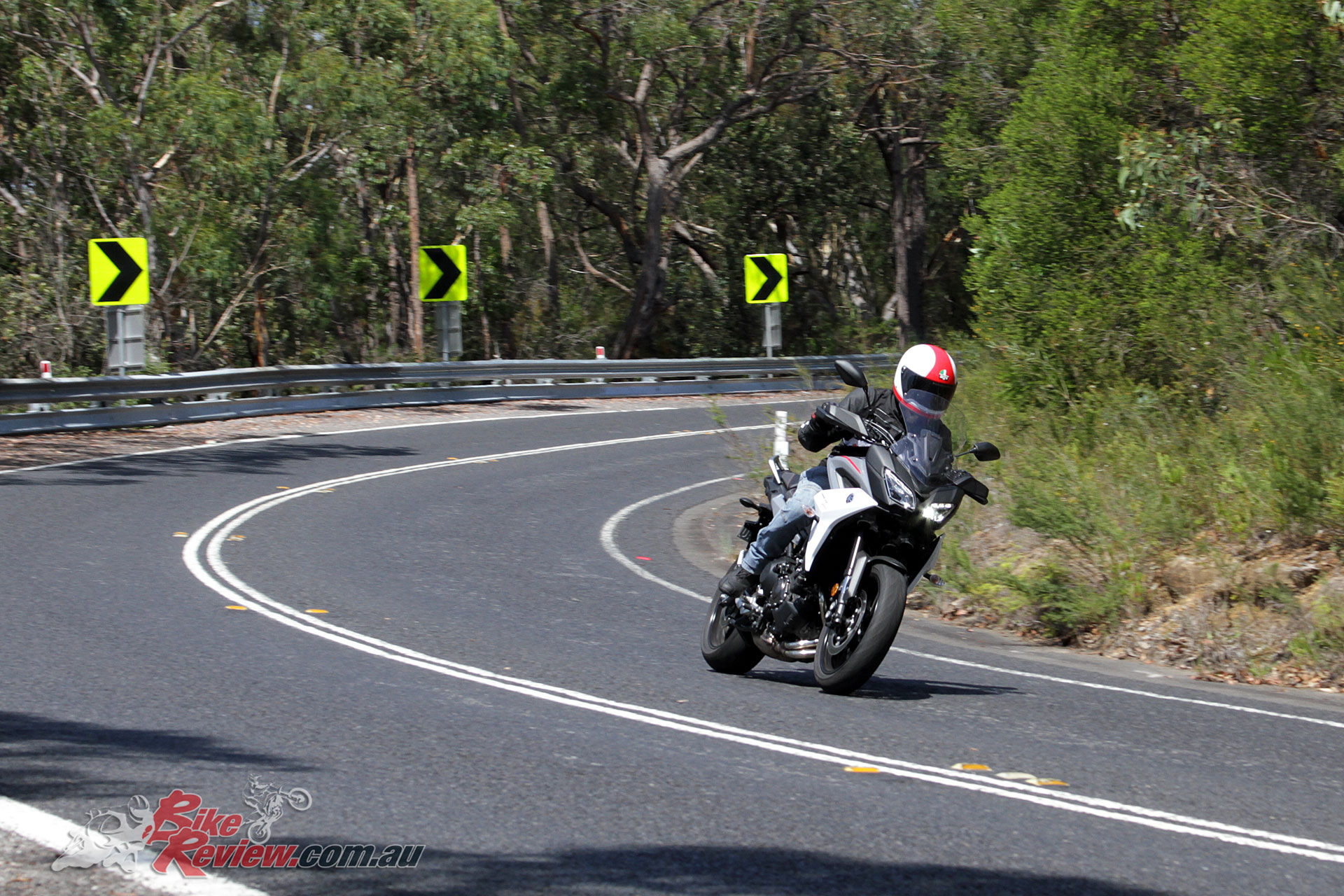
The Tracer 900 features a refined RbW system, with ride modes delivering significantly different characteristics
There’s obviously been some compromise between general ridability and the ‘off its chops’ nature, but by my judgment Yamaha have got the balance right.
On the smoother twisties A-mode provides the most instant throttle response and is obviously the sport mode. Fueling is smooth and a slipper clutch ensures aggressive downshifting doesn’t upset the bike, while general engine braking is light. There’s very little flywheel effect with the Tracer, so you ride to suit, while a steady throttle rewards with a good ability to hold a speed, and none of the hypersensitivity to almost undetectable throttle movement that some RbW systems exhibit. When the going did get really rough, I did find myself switching back to Standard mode though.
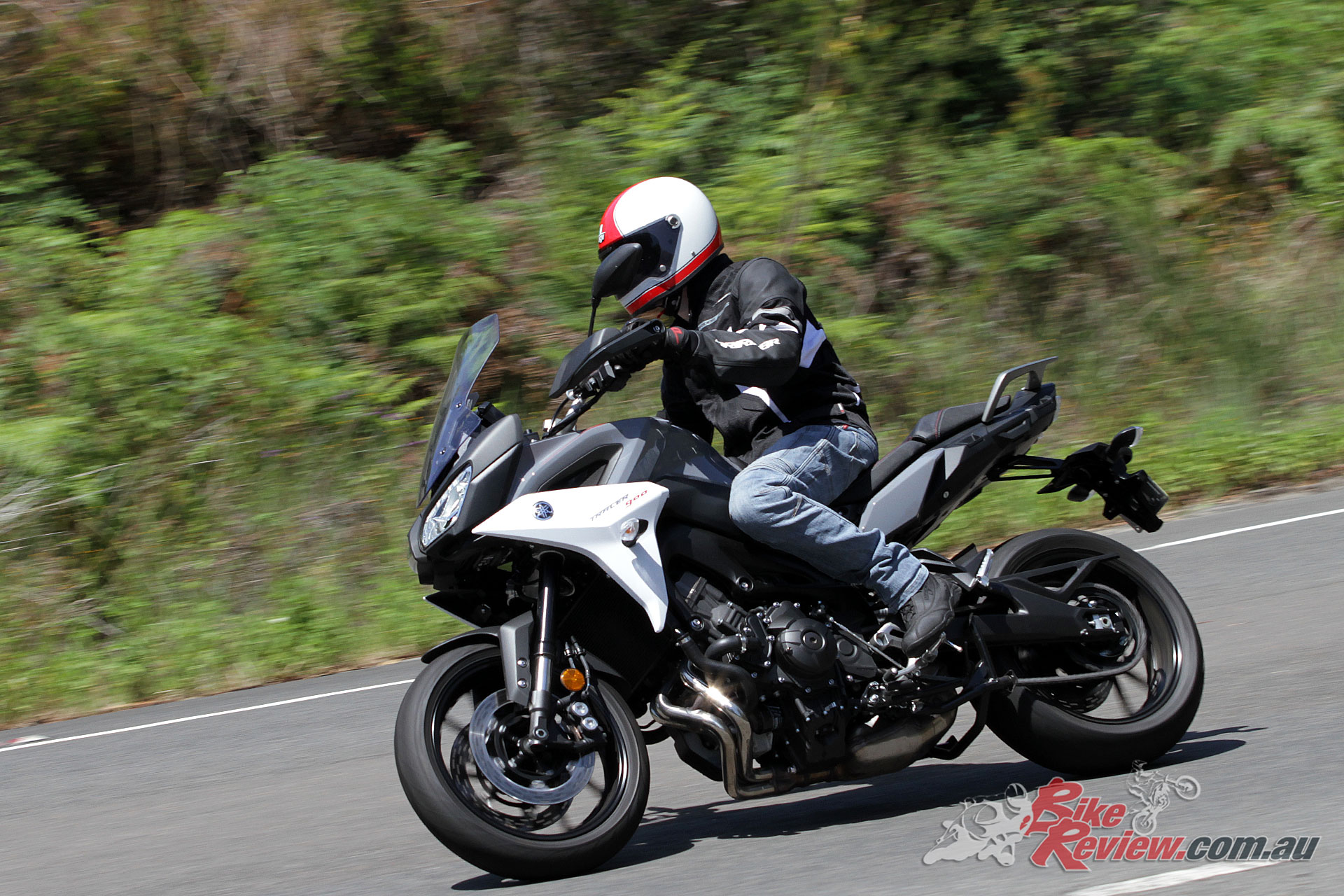
Suspension is on the sporty side on the Tracer 900, with preload and rebound adjustability at both ends
If desired you could leave it in third gear without breaking a sweat and still be in constant trouble with the authorities, such is the effortless acceleration on offer, although this obviously isn’t something unique to the Tracer in this capacity range.
The suspension, which offers rebound and preload adjustability at both ends, comprises of 41mm forks and a monoshock, and offers a relatively sporty ride, with some initial softness in the forks that firms up later in the stroke. On the smoother roads I found it ideal, especially having a fang through the twisties with good stability on the front brakes into turns, while over the really rough Aussie roads the compression became harsh further through that stroke and was at times noticeable mid corner.
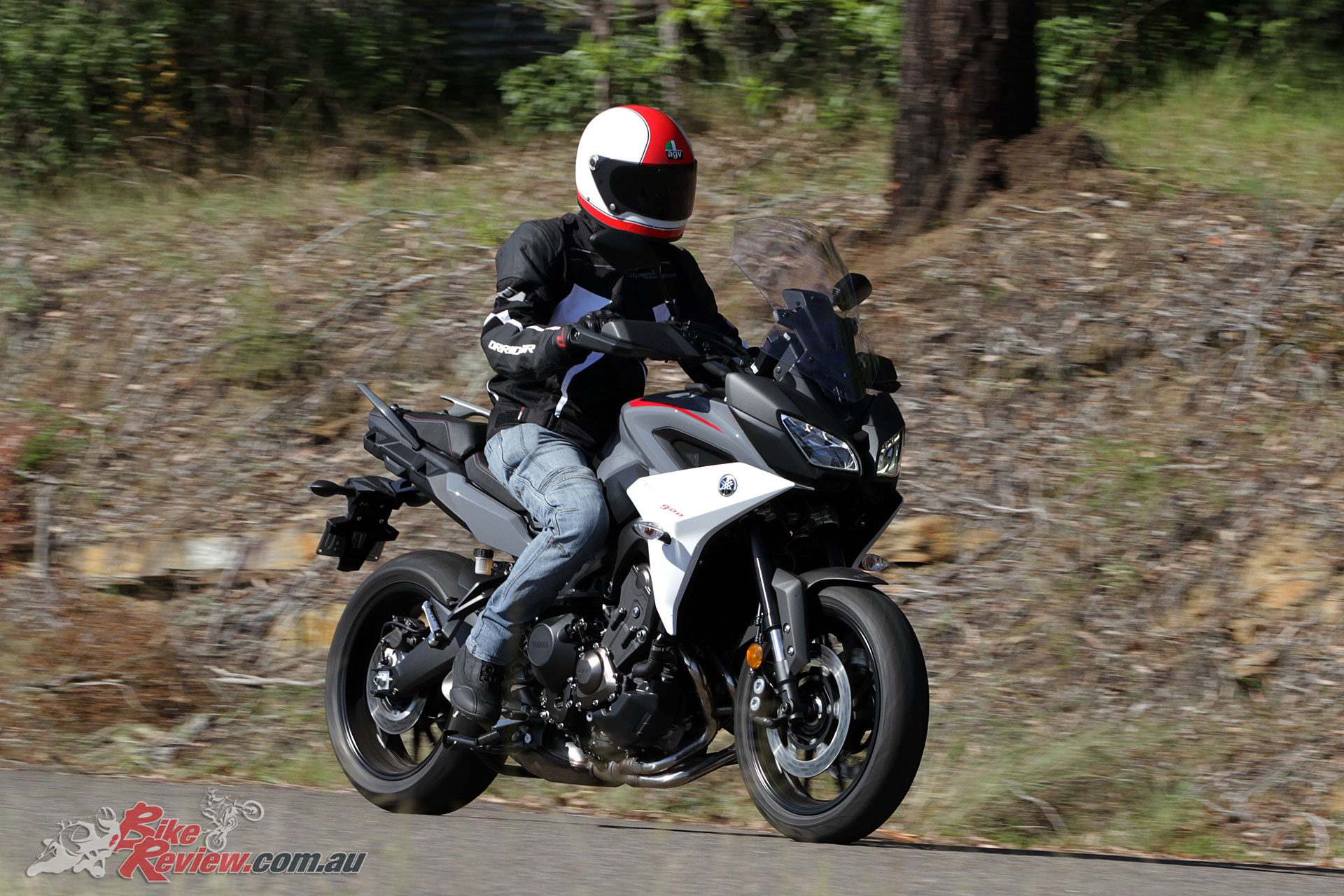
The dual disc brakes on the Tracer 900 feature 298mm rotors and four-piston calipers, with good power and modulation
The rear was relatively well controlled too, although over the really big bumps the rebound would occasionally struggle, and the lack of an external preload adjuster was a little disappointing, just as a quality of life addition, but is probably me being pedantic. If I’d had the chance to do some additional longer 500-600km rides I’d have attempted more within stock adjustment, but over the silly season I unfortunately didn’t have the opportunity.
There’s also plenty of power in those front brakes, with dual 298mm rotors and four piston calipers, with a moderate amount of bite and plenty of modulation. Trailing the brakes into corners is easy, and transitions on and off the brakes also smooth. On really sudden heavy braking and in traffic coming to a stop there was a bit of a tendency to get some dive in the forks with my late braking technique, but a more restrained approach kept everything smooth.
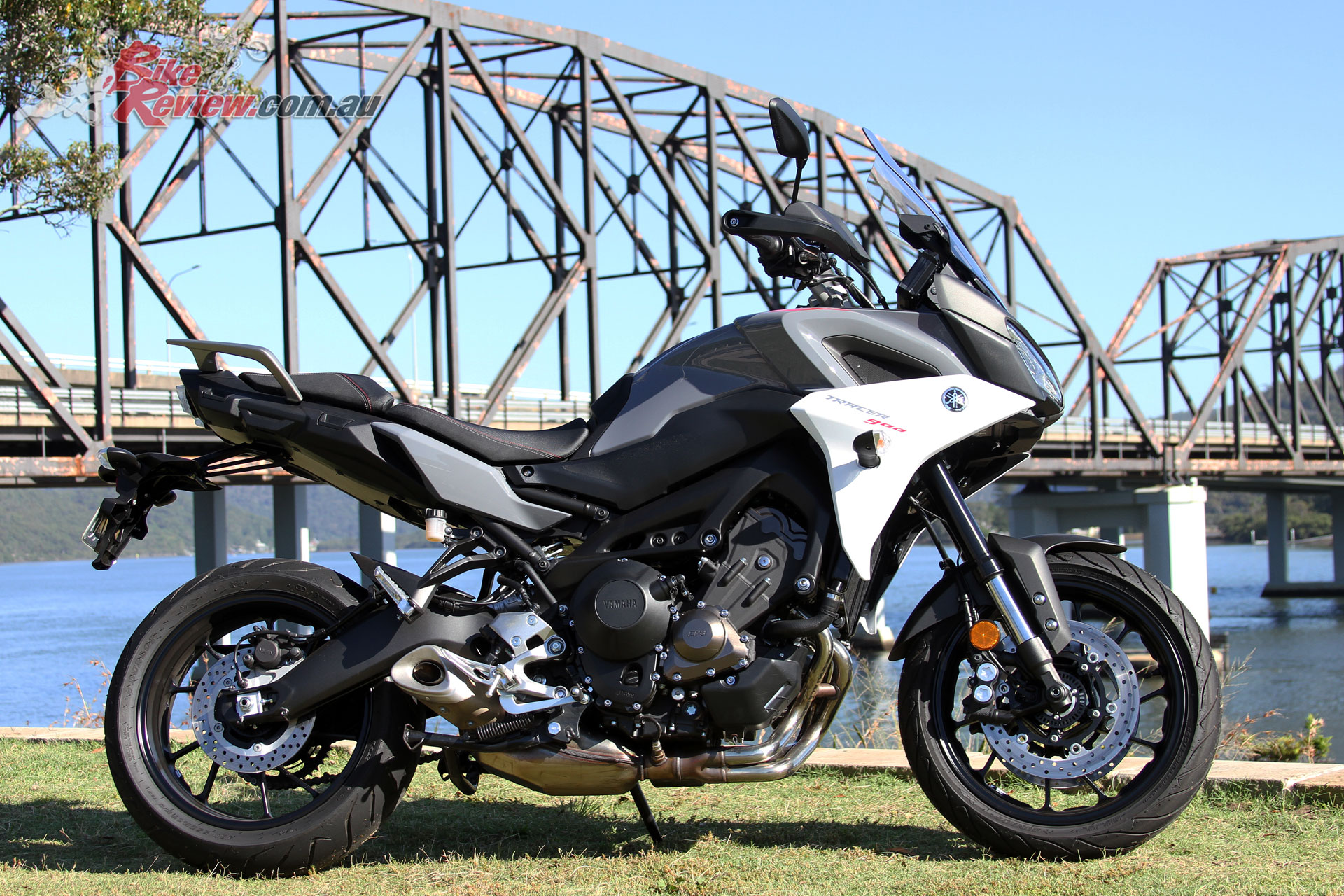
2019 Yamaha Tracer 900
2019 YAMAHA TRACER 900 – CONCLUSION
The latest iteration of Yamaha’s Tracer 900 offers an attractive sports touring option, with a characterful and refined triple-cylinder engine and commendable combination of electronics and high quality components, while the buy-in sits at a competitive $15,499 + ORC.
Ideal as a sporty long distance tourer, the Tracer 900 is well equipped to take a pillion, while also delivering the thrills when you’re out to have a bit of fun.
You don’t get all the bells and whistles, but those are available with the GT for a premium and the Tracer 900 is a genuinely great all-rounder, and well worth a look-in, especially if you want a sporty tourer at a competitive price.
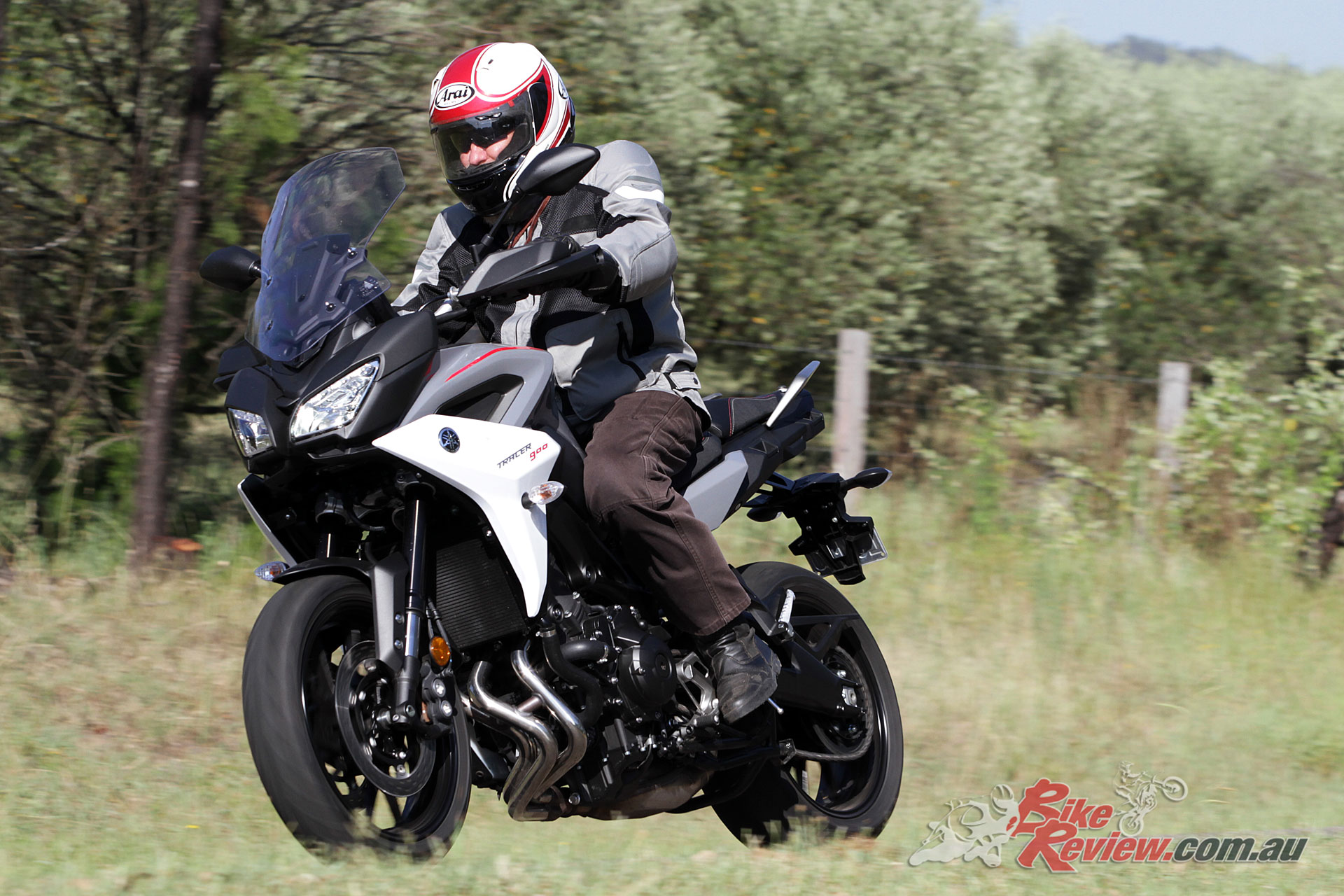
2019 Yamaha Tracer 900
SECOND OPINION – DAVID H.
Yamaha’s Tracer 900 is unusual in that instead of bright coloured bodywork it has a light grey and white colour scheme with black wheels. Quite a contrast to most new bikes. As is now common, the front fairing and tank are dominant in styling, with the seat unit tapering off to a point, complete with taillight. When seated on the bike, the fairing and tank are quite bulbous, dominating. This is an impression only and soon fades away…
At 90kg all kitted up, and being of ‘mature’ age, I found the relatively simple suspension effective in all conditions but two. The front suspension with its adjustable pre-load and rebound damping is very effective at soaking up most road shocks, but when encountering very rough areas of bitumen transfer every little ripple and surface defect straight through into the rider. The front suspension also seemed to freeze at around half stroke when banked over in some corners, which was disconcerting.
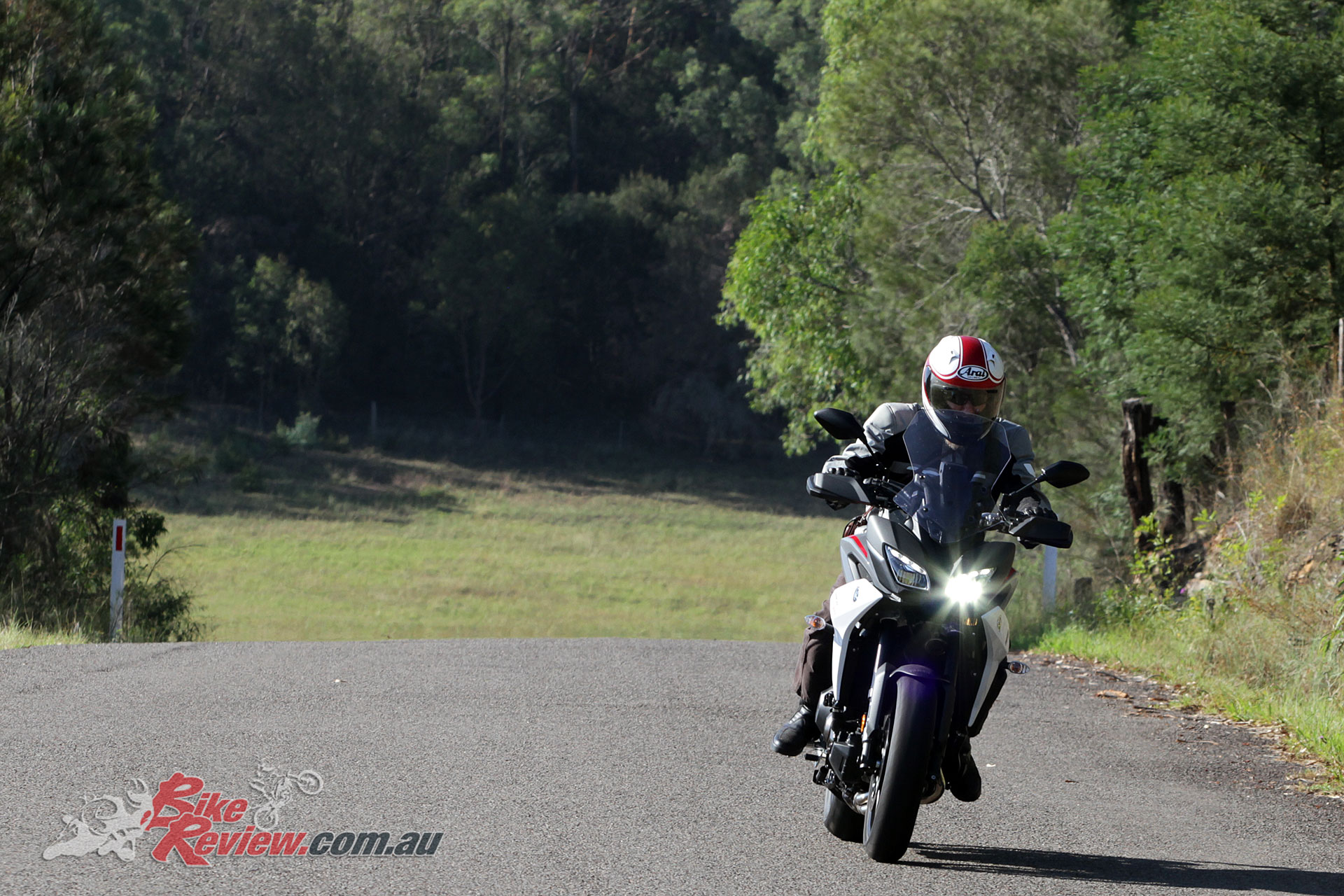
2019 Yamaha Tracer 900
The bike steers well at all speeds however, aided by the wide higher set handlebars and goes where it is pointed and in doing so exhibits a neutral manner.
In traffic the Tracer is still capable of threading down between stopped lines of cars, while out on the open road it really is in its element. It is a delight to swing through bends and zip between corners, using the broad power band to propel you out of corners, and a slight backing off of the throttle provides engine braking for most corners unless really pressing on in the tighter stuff. Ground clearance is very good, even with the lower set footpegs.
All controls are light and provide good feedback. The clutch and brake levers are nicely sized to suit a range of hand sizes and reach. The blinkers, horn, starter and controls are all well positioned and fall readily to hand. The rear vision mirrors provide a good view of what is behind you without your elbows/arms intruding which is welcome.
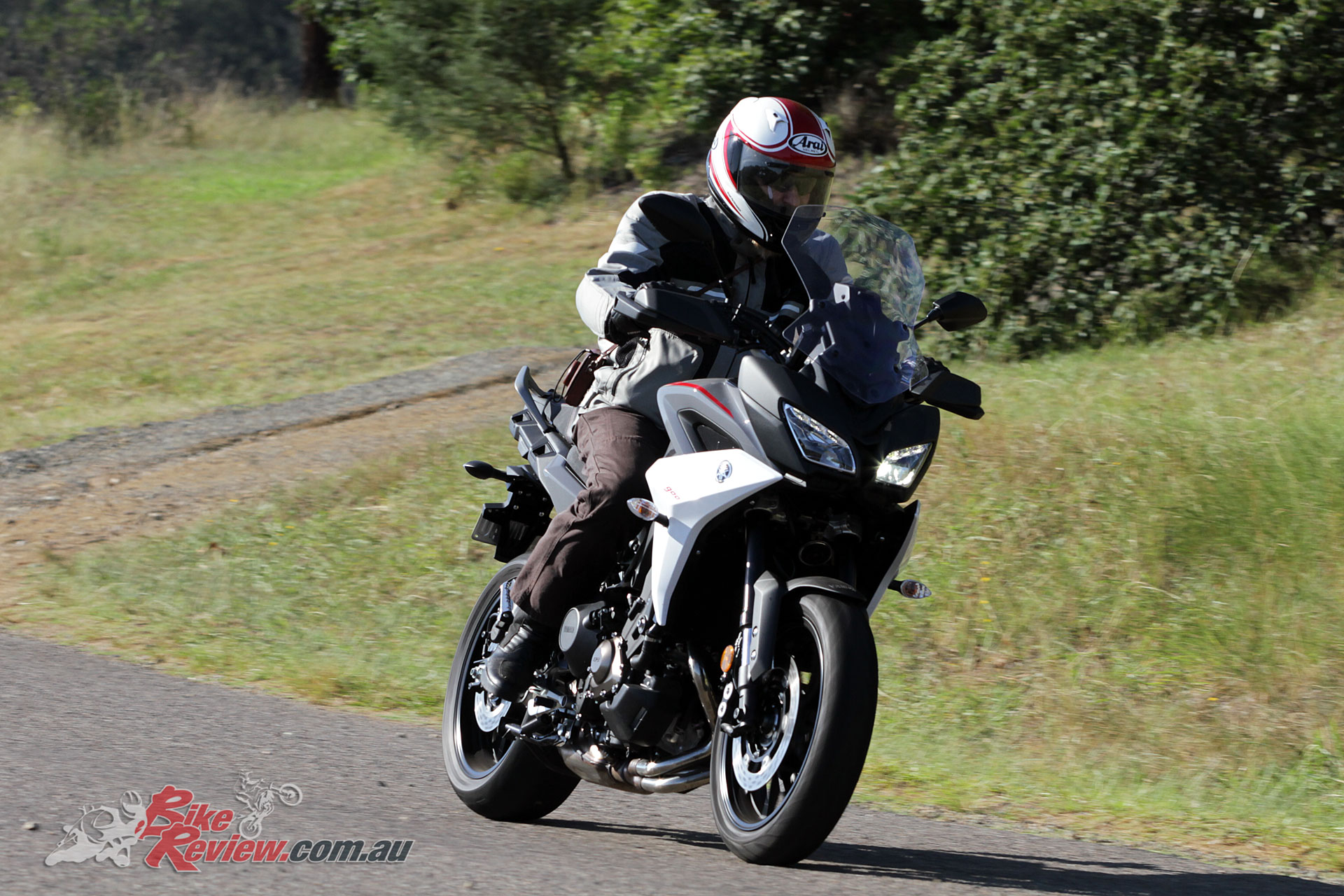
2019 Yamaha Tracer 900
The front brakes are powerful, able to be well modulated, as is the rear, proving a nice balance without being too powerful. Using both brakes hard provides excellent, controlled stopping power and very short distances.
The dashboard is in fact two separate displays and I found it very good to use with large icons/symbols and variables displayed. The Mode selector on the right switchblock was easy to use and the resultant mode easy to see on the dash. Of the three modes available, I used Standard and A-Mode. A-mode seemed to sharpen up the engine response and make the mid-range a bit more meaty/powerful – this is a seat of the pants impression only, but there is a definite change to the engine response, especially out on the open road and enjoying yourself.
There is no question on comfort for the rider’s seat, it handled several hours in the saddle without upsetting my older body. The pillion seat is well proportioned and has a good relationship with the lower set footpegs, but does require a high throw of the leg when jumping on board. The rider’s seat provides a reasonable reach to the bars allied with lower set foot pegs, providing a riding position that I found very comfortable.
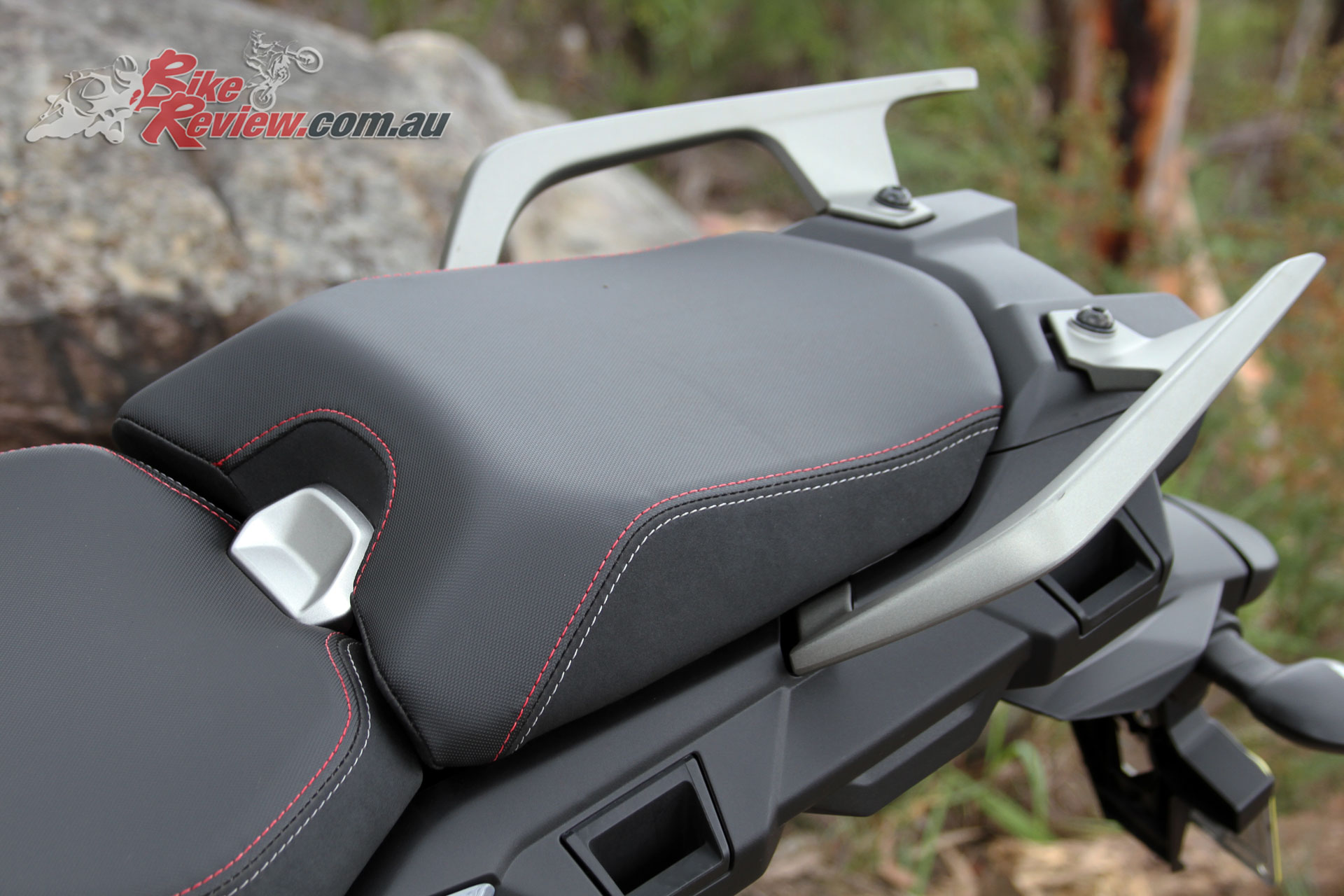
2019 Yamaha Tracer 900 – Generous pillion and rider seats ensure great touring comfort
The fairing screen provided acceptable cover, and in the setting I settled on allowed me to ride with my visor up, up to around 100km/h without any buffering or wind in the eyes.
Now we come to the star of the show – the engine. What a unit. Triple-cylinder power through the whole rev range and a meaty mid-range, just where you need it for real world motorcycling. The standard exhaust also plays a good tune to go with the performance while remaining unobtrusive to the rider.
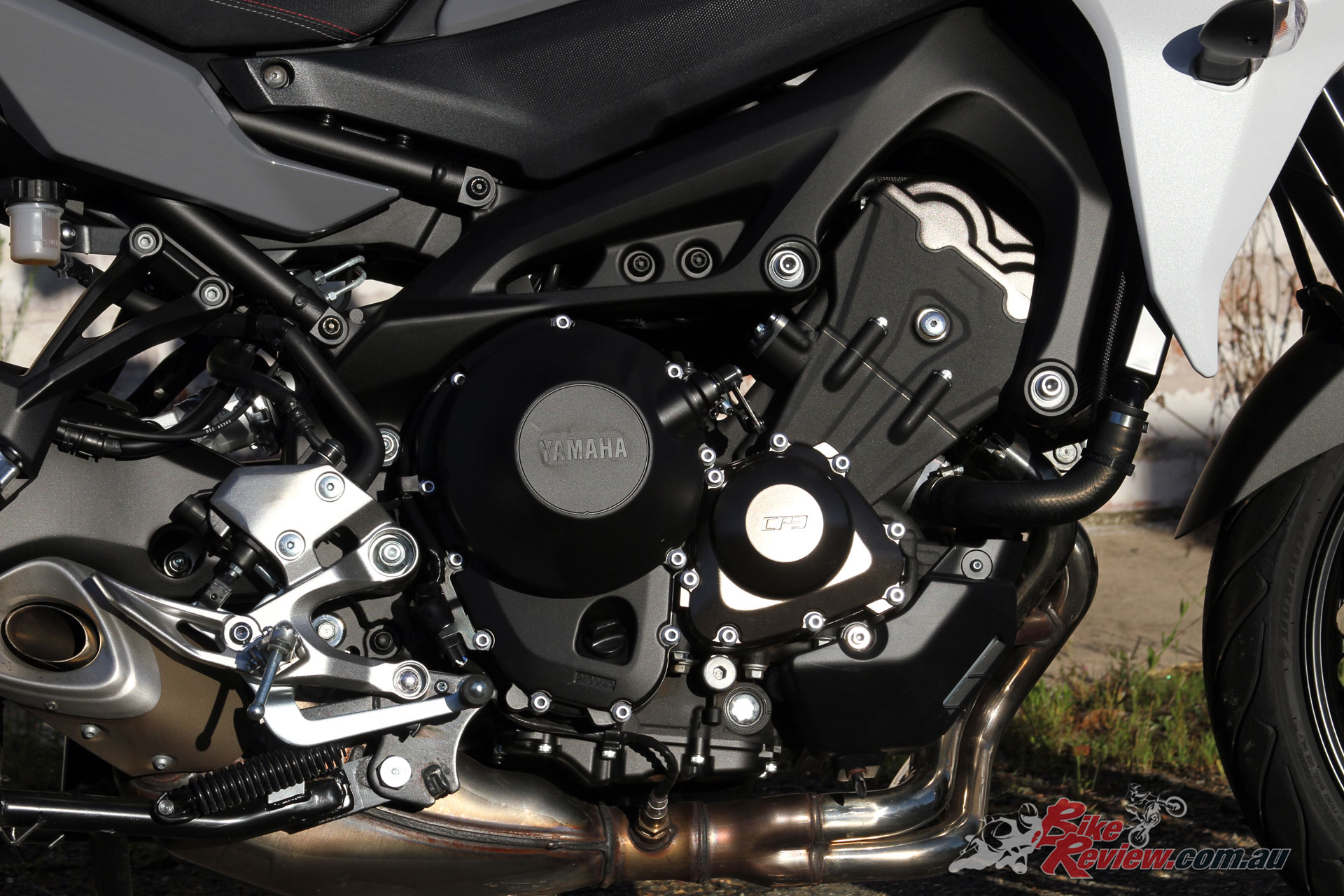
2019 Yamaha Tracer 900 – CP3 847cc triple-cylinder
On the open road fifth gear was the gear of choice, while on larger arterial roads third seemed to be perfect. The engine just responds so well when called on it blends back into the background, and I found that I had to check the gear indicator to see what gear I was in. Short, crisp changes are the go both up and down the gearbox, with just a snick on the gear lever required. No quickshifter here, and none needed.
Yamaha have made the Tracer 900 an excellent all round motorcycle and it most definitely works out and away from the city, handling all sealed road types with aplomb and this is a bike that offers excellent value for money.
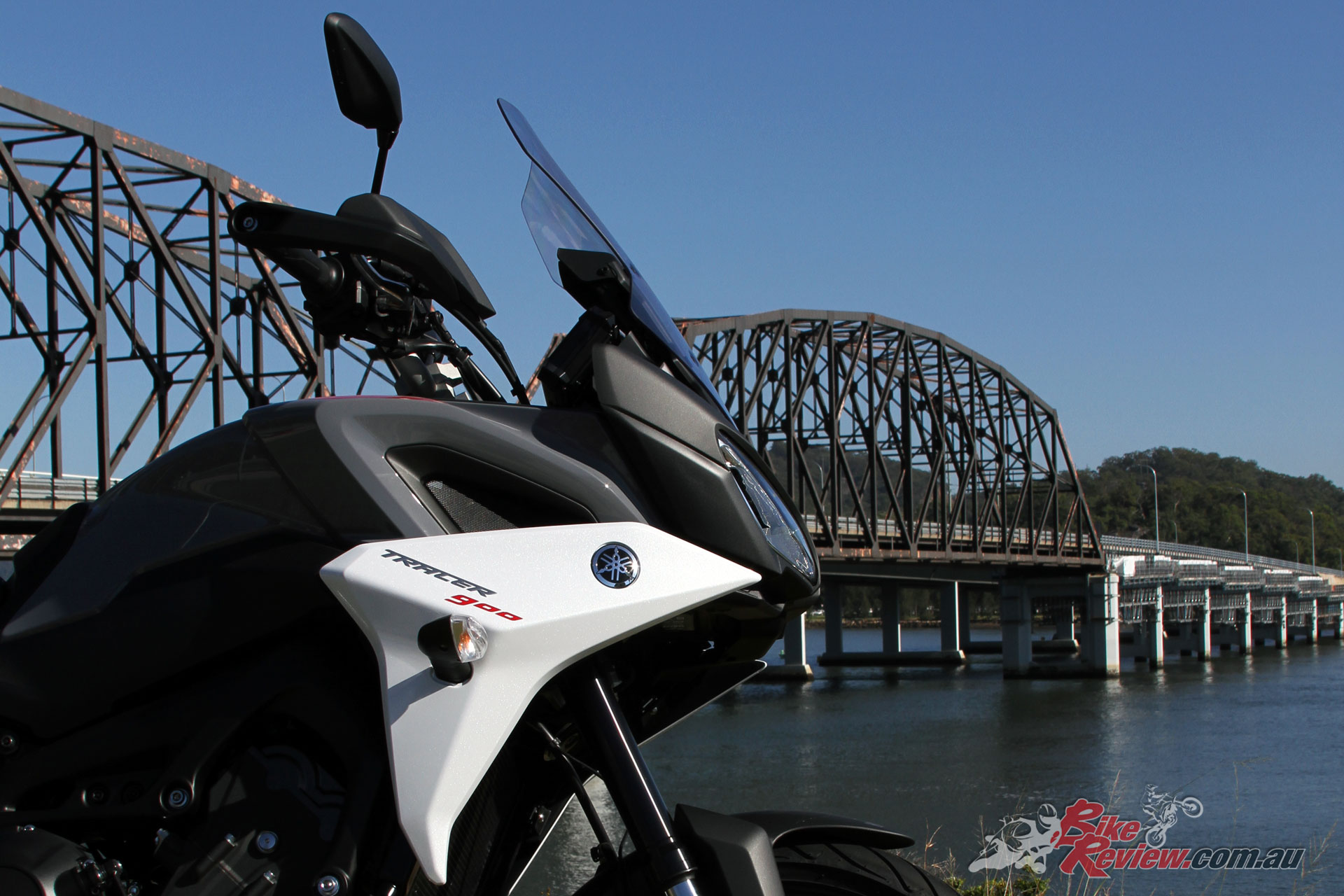
2019 Yamaha Tracer 900
2019 YAMAHA TRACER 900 SPECIFICATIONS
PRICE: $15,499 plus on road costs.
Warranty: Two-year, unlimited kilometre
Colours: Nimbus Grey
Claimed power: 85.8 kW [115bhp]@11000rpm
Claimed torque: 87.5 Nm [64.5ft-lbs]@8500rpm
Wet weight: 207kg
Fuel capacity: 18L
Engine: Liquid-cooled, crossplane triple, 12-valve four stroke, 78 x 59.1mm bore x stroke, 847cc, 11.5:1 compression, fuel injected with selectable three engine modes, traction control three levels
Gearbox: Six speed, constant mesh.
Clutch: wet plate, multiple disc, assist & slipper
Chassis: “Control filled” diecast aluminium diamond frame
Suspension: 41mm USD forks, preload & rebound adjustable, 137mm travel, Likn-type rear suspension, preload & rebound adjustable, 142mm travel.
Brakes: ABS : Front dual 298mm rotors with four pot radially mounted calipers, rear single 245mm rear rotor with a single pot caliper.
Wheels: Cast multispoke, 3.50 x 17in, 5.50 x 17in, Dunlop Sportmax D222, 120/70ZR17, 180/55ZR17
DIMENSIONS:
Overall length: 2160mm
Width: 850mm
Wheelbase: 1500mm
Seat height: Adjustable – 850 to 865mm
Ground clearance: 135mm
Instruments: Multifunction LCD display, secondary trip counter display and gear indicator
The Verdict | Review: 2019 Yamaha Tracer 900


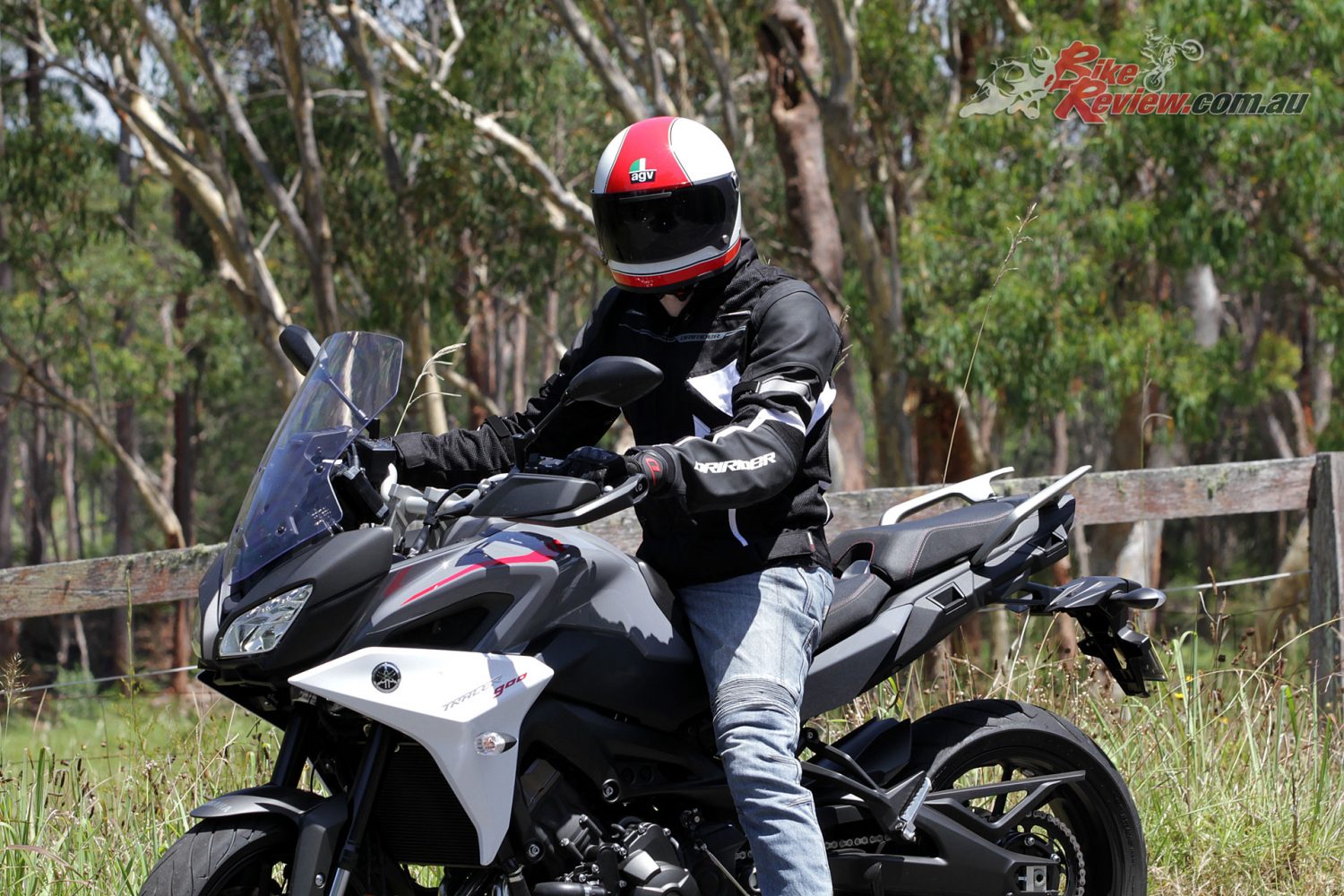

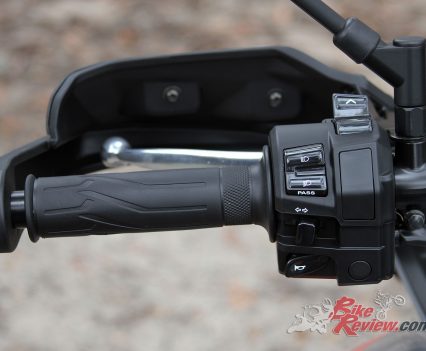
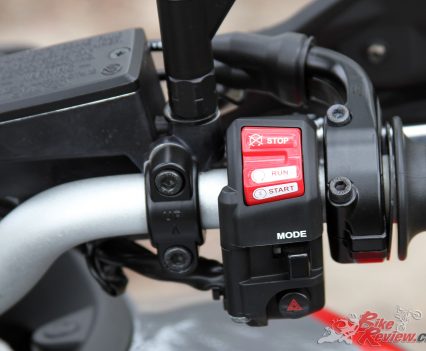
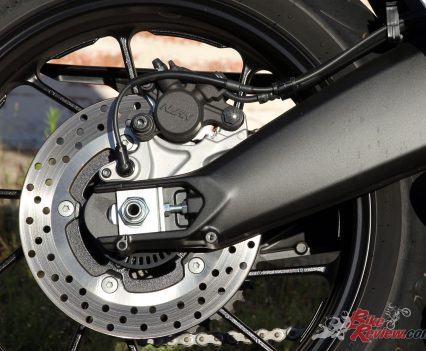
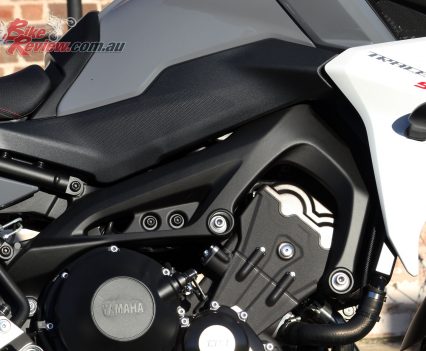



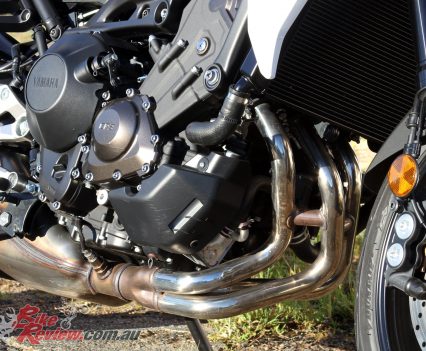
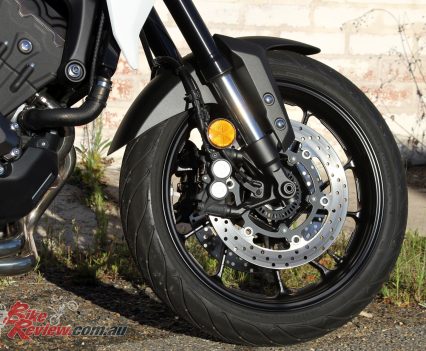
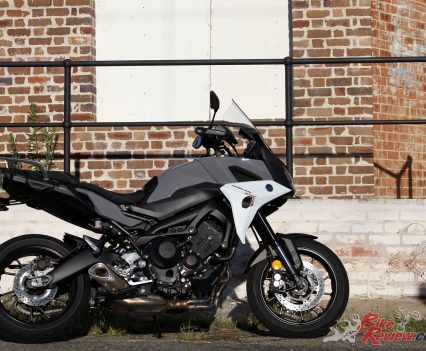
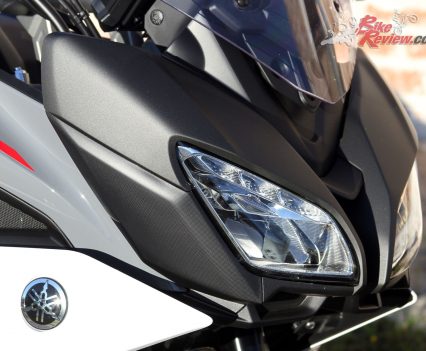
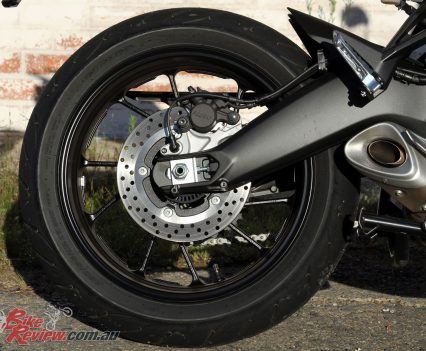
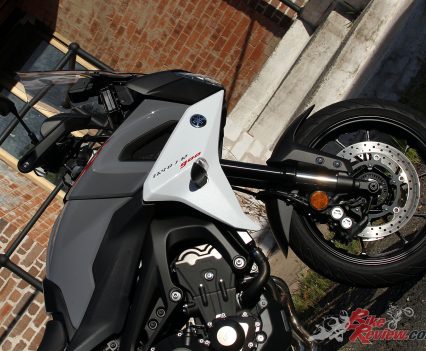
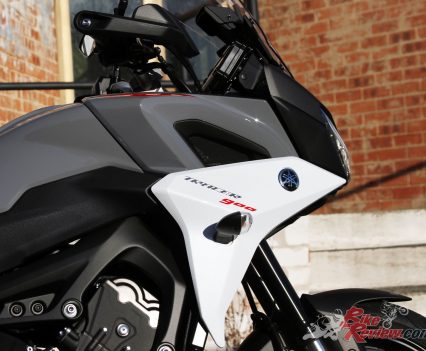
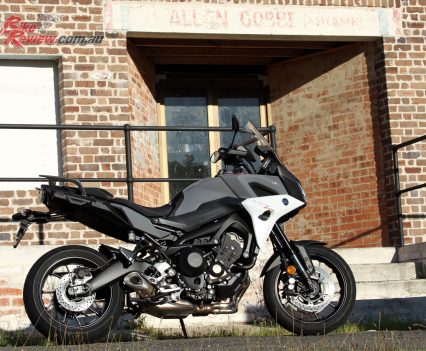
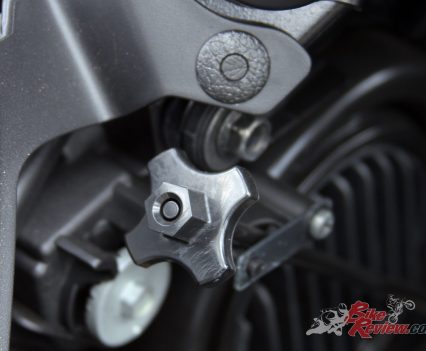
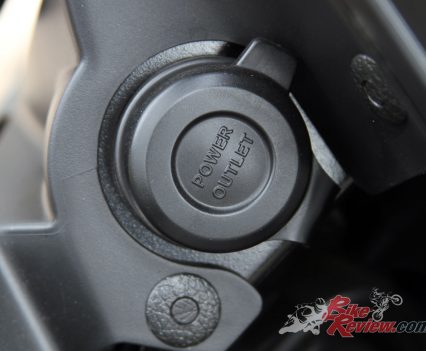
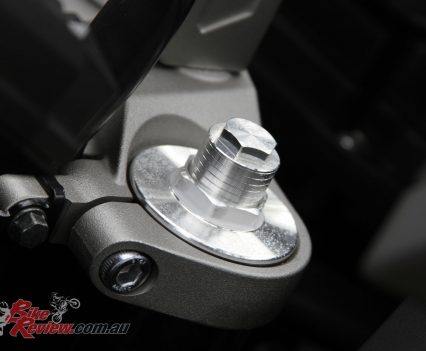
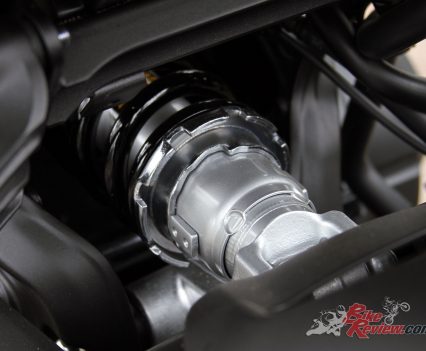
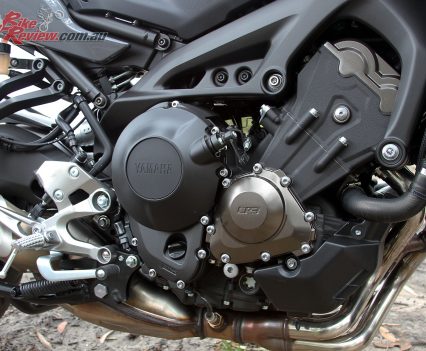
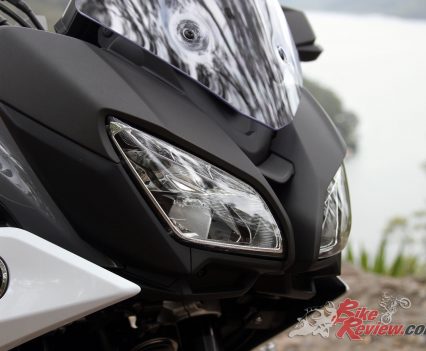
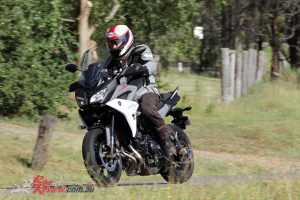
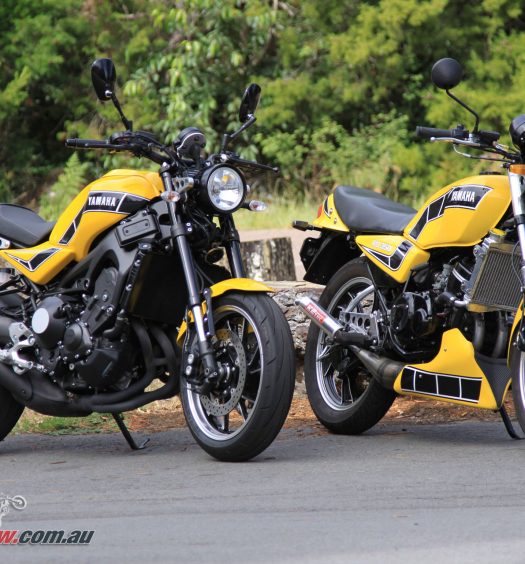
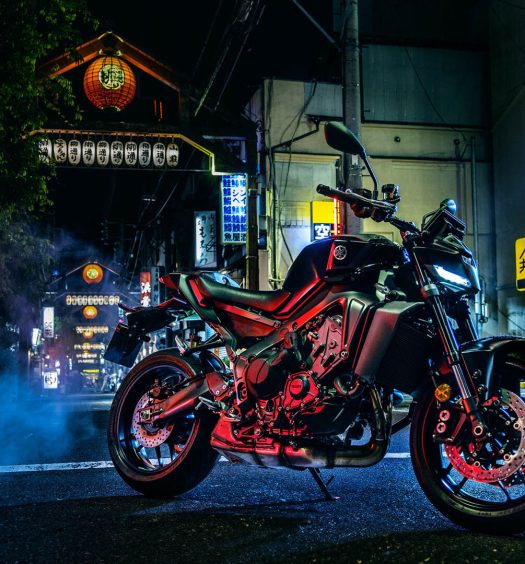




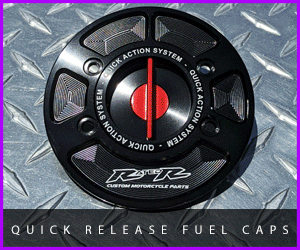








April 10, 2020
Jeez I don’t know about this one.
The Kawasaki Ninja 1000 and Suzuki GSXS1000F cost around the same money. They’re full size Sport Touring bikes with full fairing and higher quality finish.